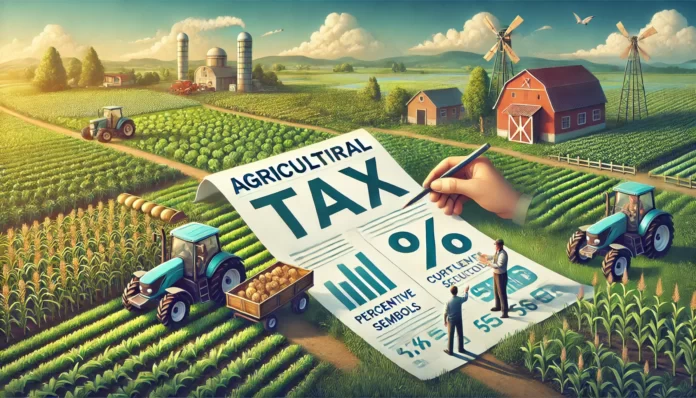The Sindh government has postponed the implementation of up to 45% agriculture income tax for one year and restored the previous 15% rate, stating that higher rates could not be applied retrospectively from January 2025, according to The Express Tribune.
The Sindh Agriculture Income Tax (Amendment) Ordinance 2025, promulgated by Governor Kamran Khan Tessori on Tuesday, takes effect from January 1, 2025, effectively deferring IMF-agreed reforms to July 2025.
The move aligns Sindh with Punjab, which last month issued a notification delaying enforcement of the higher rates until the next fiscal year.
The Express Tribune cited a senior official from the Sindh Revenue Board, who confirmed that the province “followed Punjab’s lead,” as both faced practical challenges in implementing the revised rates mid-fiscal year.
Under the ordinance, the old progressive tax structure has been reinstated. Farmers with annual income up to Rs1.2 million remain exempt from taxation, while those earning between Rs1.2 million and Rs2.4 million will pay 5%, and incomes up to Rs4.8 million will be taxed at 10%.
The maximum rate of 15% applies to income exceeding Rs4.8 million. In contrast, the federal tax structure imposes rates between 30% and 45% for comparable income brackets, along with a 10% surcharge at the top tier.
According to officials, this means agricultural income—which accounts for about one-fourth of Pakistan’s GDP—will continue to generate only a few billion rupees in provincial taxes. In comparison, salaried individuals paid Rs575 billion in income tax during FY2024–25 alone.
Provincial governments had earlier committed to the IMF to align their agriculture income tax regimes with federal rates under the Extended Fund Facility. The original plan required implementation from January 1, 2025, with tax collection starting in July 2025.
However, both Punjab and Sindh have now deferred enforcement by one year, citing administrative difficulties and resistance from influential landowners represented in provincial assemblies.
The new ordinance also gives the Sindh government executive authority to amend income tax rates through simple notifications, bypassing the provincial assembly.
The notification states that the government may revise schedules “at any time during a financial year,” provided that such changes are later presented to the assembly during the next budget session.
Furthermore, the ordinance allows the government to apply any future tax changes retrospectively “from any previous date specified in the notification,” a clause that analysts say could undermine transparency in provincial fiscal management.
It remains unclear whether the IMF and World Bank were informed prior to the decision. However, officials involved in fiscal negotiations said that the lenders were “aware of the implementation challenges” but expected provincial governments to honor reform timelines agreed under the IMF program.
With the new ordinance, both Sindh and Punjab have effectively delayed the start of higher agricultural income tax rates to July 2025, pushing their practical enforcement to FY2025–26. Other provinces are expected to take similar measures, further postponing the federal government’s plan to integrate agricultural income taxation into the national fiscal framework.























